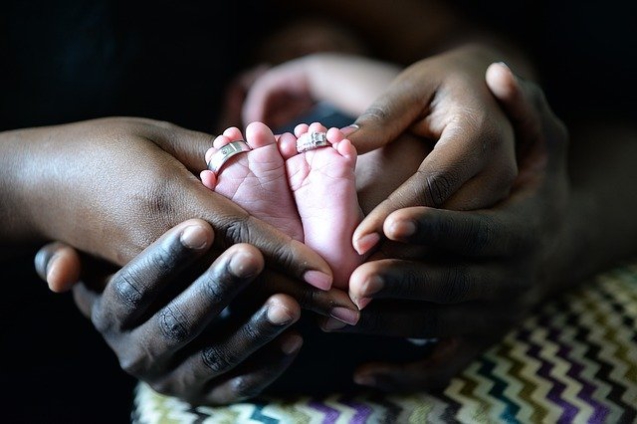Data from the Births and Deaths Registry of Ghana indicates that for every recorded death in 2022, 13 births ensued. This was indicated in the 2022 Statistical reports on births and deaths registration.
According to the reports, "In 2022, Ghana recorded a total of 50,992 registered deaths," whereas "a total of 677,140 births were officially registered and documented."
This translates to a death to birth ratio of 1:13 indicating that the number of births registered are 13 times the number of deaths recorded.
Details of the report showed a growing trend in death to birth ratio over the years.
The 2022 report indicated a significant gender disparity in mortality rates, with men comprising 60% of total recorded deaths. This observation is juxtaposed against a more balanced gender distribution in births, where men accounted for 50.8% of registrations. This discrepancy suggests a potential long-term demographic shift, as the male population may gradually decrease over time due to a mortality rate outpacing the birth rate.
Furthermore, a geographical analysis reveals notable regional variations in both births and deaths. Approximately 46% of total registered births were concentrated in the Ashanti, Greater Accra, and Northern regions. Conversely, more than half of registered deaths occurred in just three regions: Greater Accra, Ashanti, and Eastern. This geographic disparity in mortality rates could be indicative of varying healthcare access, socio-economic factors, or other regional influences impacting population dynamics.
The 2022 report underscored a significant gender disparity in mortality rates, with men comprising 60% of total recorded deaths. This observation is juxtaposed against a more balanced gender distribution in births, where men accounted for 50.8% of registrations. This discrepancy suggests a potential long-term demographic shift, as the male population may gradually decrease over time due to a mortality rate outpacing the birth rate.
Furthermore, a geographical analysis reveals notable regional variations in both births and deaths. Approximately 46% of total registered births were concentrated in the Ashanti, Greater Accra, and Northern regions. Conversely, more than half of registered deaths occurred in just three regions: Greater Accra, Ashanti, and Eastern. This geographic disparity in mortality rates could be indicative of varying healthcare access, socio-economic factors, or other regional influences impacting population dynamics.
Latest Stories
-
Minerals Commission, Solidaridad unveils forum to tackle child labour in mining sector
3 mins -
Election 2024: Engagement with security services productive – NDC
4 mins -
‘Let’s work together to improve sanitation, promote health outcome’ – Sector Minister urges
6 mins -
Ellembelle MP cuts sod for six-unit classroom block at Nkroful Agric SHS
9 mins -
‘I’ll beat the hell out of you if you misbehave on December 7’ – Achiase Commanding Officer
11 mins -
AFPNC leads the charge on World Prematurity Day 2024
17 mins -
Court remands unemployed man over theft of ECG property
23 mins -
Election security rests solely with the police – Central Regional Police Command
25 mins -
NCCE engages political youth activists at Kumbungu on tolerance
26 mins -
‘In Mahama’s era students lacked chalk, but are now receiving tablets’ – Bawumia
35 mins -
Project commissioning not a ploy to attract votes – Oppong Nkrumah
37 mins -
CBG records GH¢1bn revenue in Q3
40 mins -
Mahama vows to create an agro-processing zone in Afram Plains
54 mins -
Political parties should plan for losses, not just wins – IGP advises
55 mins -
524 Diasporan Africans granted Ghanaian citizenship in ceremony
57 mins

